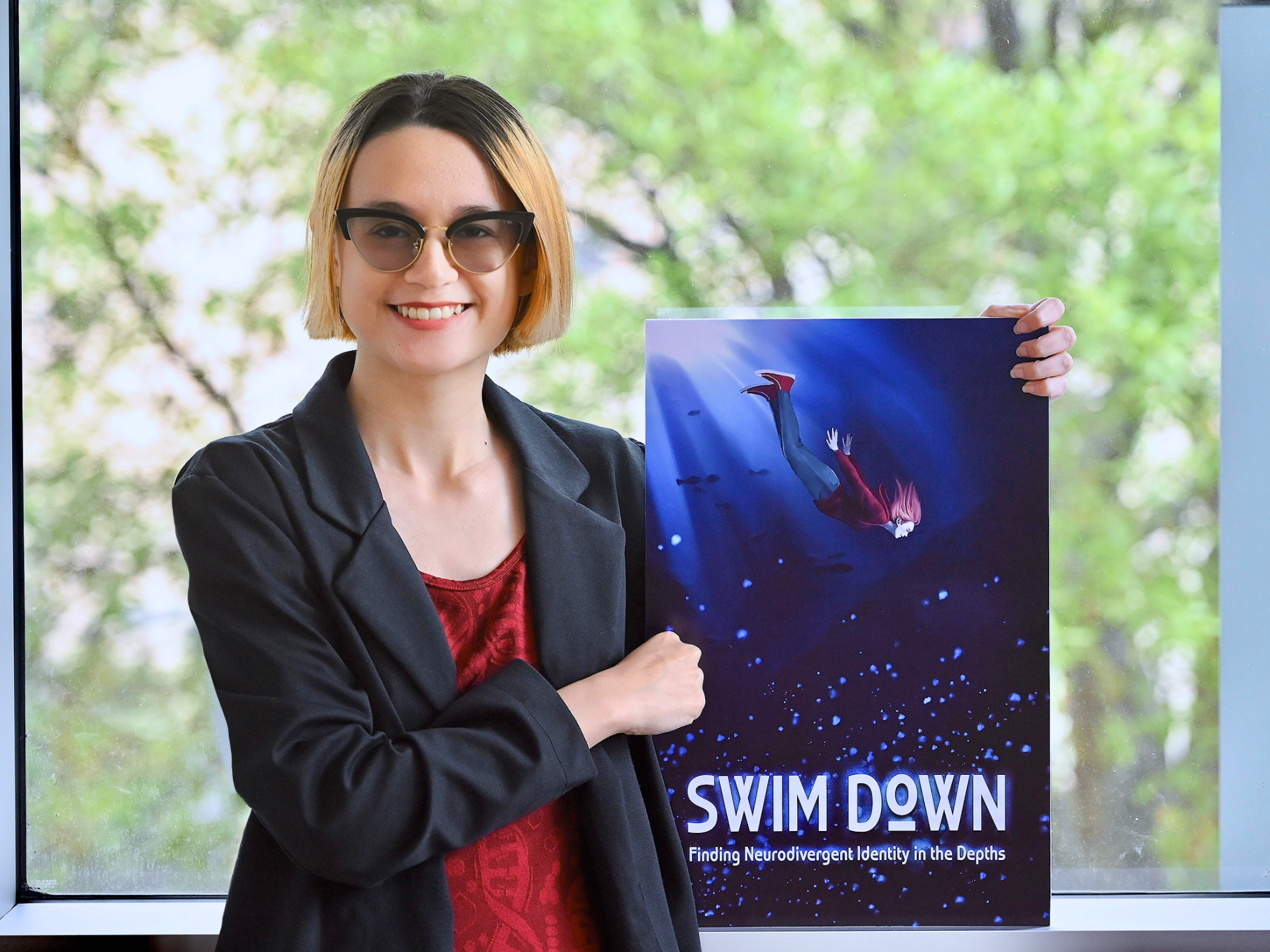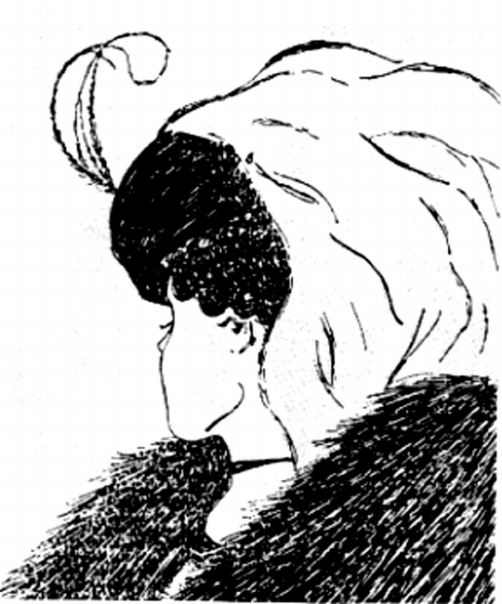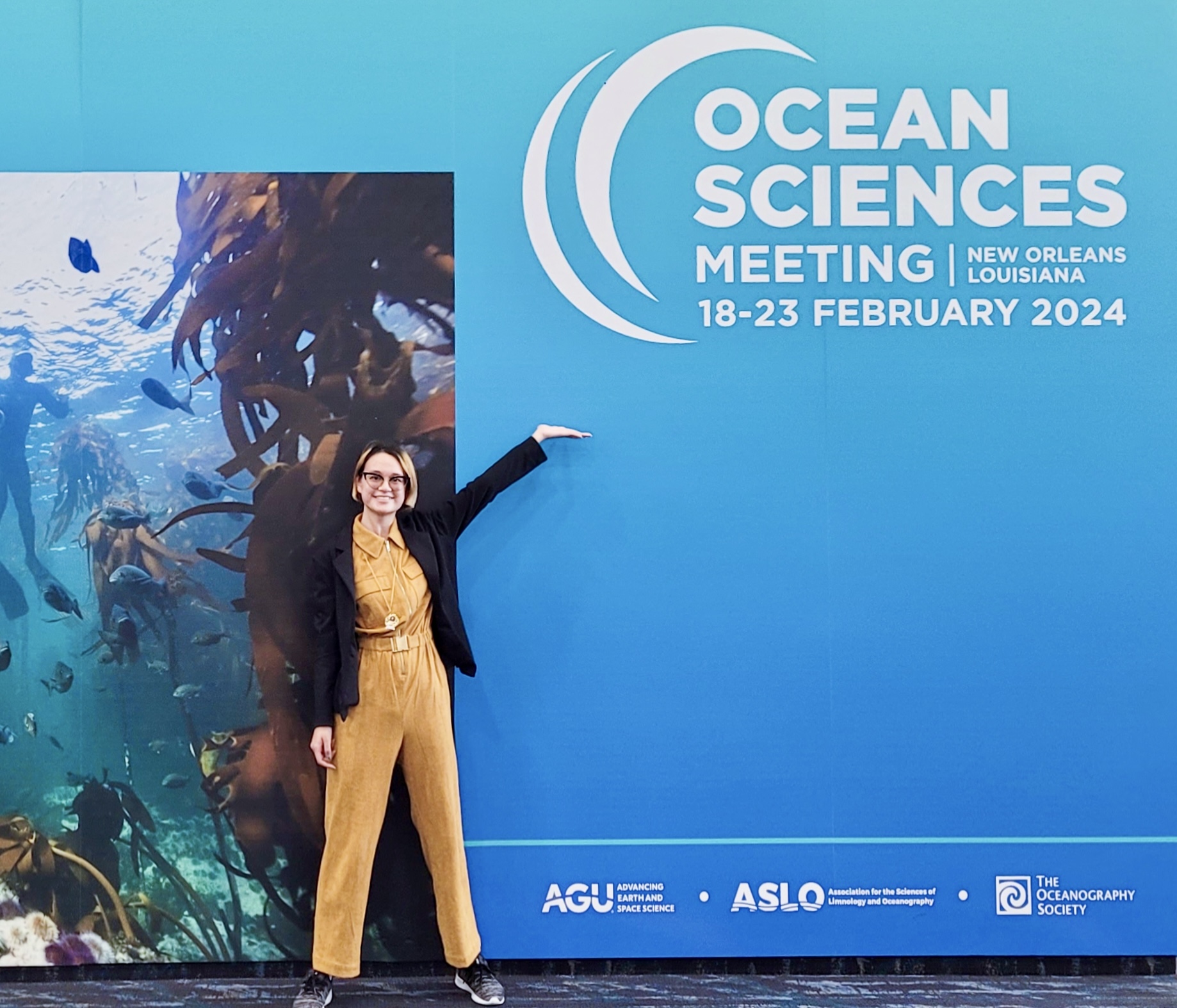By Carly Orewiler
May 9, 2024

Harnessing the universal language of art, an alumna and visionary microbiologist is on a mission to bridge the gap between science and society.
Recently accepted into the Scripps Institution of Oceanography PhD program at the University of California San Diego this fall, Freya Hammar BS’21, MS’22 seems to do it all. Her roles as a researcher, multimedia artist, podcast host and social media content creator are all rooted in one mission: to connect people through discovery.
“The best scientists are the ones who can communicate their ideas,” said Hammar, who studied biology and biotechnology in the Department of Biological Sciences at UT Dallas. “In my opinion, art is the best way to make science accessible.”
For years, Hammar has been drawing ‘merfolk’ (mermaid people) as a hobby for a personal science fiction project, but when she was approached by science communicator Lilianna Watson, her drawings became part of a bigger story.
Hammar is the concept artist and illustrator of Swim Down, a digital graphic novel about a neurodivergent teenager’s transformative journey in the deep sea.
Written by Watson, the book explores how Mari, the main character, uses her unique sensory differences as powerful adaptations that allow her to form deeper connections to her environment, painting a positive picture of neurodiversity.
“Neurodivergence has advantages, but they’re often overlooked because we live in a society that’s built for neurotypical people,” Hammar said. “I think it’s really good to talk about what we can gain from our differences.”
Mari’s sensitivities to light, noise and touch harmonize with deep sea conditions such as darkness, quiet and pressure, allowing her to feel ‘seen’ for the first time. Along the way, she meets eccentric creatures such as the Dall’s porpoise, crystal amphipod and bloody-belly comb jelly.
On April 27, Hammar presented Swim Down at the Cool Science Expo at UMass Boston.
“When you’re in the angsty adolescent years, it can feel the most isolating,” Hammar said. “I took a lot of solace in fiction at that age, relating with the characters during their struggles and triumphs.
“I feel like there’s not enough out there, not just for the ocean sciences, but for neurodivergent people in general to really embrace the strengths of their mind. So combining that with an interest in the ocean sciences, it might speak to even neurotypical people who are interested in the ocean sciences, or neurodiverse people who aren’t interested in the ocean sciences.”
Hammar, who has a bloody-belly comb jelly sticker on her phone case, says her ability to juggle so many personal projects is fueled by her ADHD (attention-deficit/hyperactivity disorder).
Adding to her mounting list of hobbies, she also leads an online fan community for Creatures, an artificial life simulation game. What started as a childhood obsession has now grown into a collaboration with the video game creator, Steve Grand.
“I credit Creatures as the reason I got interested in biology in the first place,” said Hammar, who started playing the game in kindergarten. When she was 12, she remembers sending Grand a fan letter in the mail asking how she could donate to his new project.
Freya Hammar BS’21, MS’22
To her amazement, he wrote her back. They have been in touch ever since.
Grand, a British computer scientist and roboticist, is an OBE, which stands for Officer of the Most Excellent Order of the British Empire. This title is awarded to people who have made a significant contribution to their field or gained a national profile.
He is someone Hammar now describes as a mentor, and she is now working as his illustrator and social media guru. As a person with autism, Grand said he connects better with people who are “a little bit different.”

Using the metaphor of the popular ‘girl-witch’ optical illusion, Grand describes the neurotypical world as a place where the witch is the “right” way of seeing.
“It seems to me that the neurodiversity movement is basically about making room for people who see the girl,” Grand said. “It’s about explaining why we shouldn’t laugh at them, nor feel sorry for them, nor claim that they have a ‘deficit’ just because they don’t see what other people see. It’s about not inadvertently stacking the odds against them by asking only questions about black cats and broomsticks during job interviews.
“Seeing the girl is neither better nor worse than seeing the witch. I think Freya is someone who definitely sees the girl. And perhaps sometimes a frog.”
Even though he has known Freya for half her life, the two have only spoken face-to-face for a few hours. Grand said he is looking forward to future conversations and teamwork.
“Freya is decidedly her own person, with her own dreams and ideas, but if we both happen to be walking along the same path for a few years, then I’m quite happy to hold the flashlight.”
Several hundred miles from the coast of Ecuador, Hammar’s first-ever snorkeling experience solidified her future in marine biology. In 2020, she went on a study abroad trip to the Galapagos Islands.
“I fell in love with those islands,” Hammar said. “I fell in love with the sea.”

Already working with slime molds as a student researcher in professor emeritus Dr. Dennis Miller’s microbiology lab, she eagerly shifted her focus to marine microbes and organisms like algae and phytoplankton.
But when Hammar first entered the research environment, she saw that science communication was “always an afterthought.” After producing diagrams and illustrations for several scientific articles outside of her knowledge base, she recognized how difficult it was to explain complex concepts to the layperson.
Since her start, Hammar has provided illustrations and diagrams for various published articles, both during her time at UT Dallas and post-graduation. Her work was even featured on the cover of Journal of Geophysical Research: Oceans in March last year.
“So much science is going over people’s heads,” she said. “Not because they’re not intelligent enough to understand it or lack the background knowledge, but because we’re not putting in the effort to make it easily consumable.”
Hammar’s dedication to accessibility in STEM extends beyond her graphic novel. She also hosts the podcast Beneath the Surface, aimed at demystifying current scientific literature in the ocean sciences. Every week, she selects a piece of trending marine biology research and covers it in a way that is “easy for listeners to understand regardless of their educational background.” It was selected for the Editor’s Choice feature on the streaming platform Swellcast.
“Through illustrations, we can unlock the stories hidden within data, making science accessible and captivating to a wider audience,” Hammar said.
Help us leave the planet a better place for future generations. Your support for the School of Natural Sciences and Mathematics funds scientific discoveries with real-world applications, student and faculty recruitment, and academic scholarships.